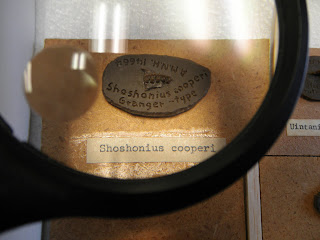There are three major orbital enclosure that we are concerned about when dealing with primates. Two on the order itself, and one that helps us set them apart. There is a feature called a post-orbital bar that acts as a sort of enclosure to assist in stabilizing the eyeball within the skull of a prosimian, which is the primate most removed from us as humans. When you look at the skull of any monkey, ape, or human you would find that the eyeball is completely and securely enclosed within the skull, reducing eyeball movement even further. This helps increase visual acuity by reducing the amount of jostling around the eyeball does. It also helps with establishing full stereoscopic vision that is a feature we primates posses.
The photos below compare the orbital enclosure, clearly showing a post orbital bar in the case of the Galago (bush baby) skull, and the full enclosure of the eye in the Saimiri (squirrel monkey.) There is also a picture of a domestic house cat, showing the complete lack of any sort of post-orbital bar Instead the bone just sort of peters out around the eye.

Galago (bush baby)

Saimiri (squirrel monkey)

House cat (notice the bone not forming completely around the eye socket.)
Next I have a series of photos comparing the forms present in a modern day macaque versus Aegyptopithecus , which is an extinct form of monkey that was alive during the Miocene period. Note the amazing similarities between the two.

Front view of the two skulls. Macaque on the left, Aegyptopithecus on the right.

Notice the ever important size of the brain case. There has been some growth in brain size over the years.

Very similar dental pattern, as well as the placement of the foramen magnum, where the spinal cord exits the skull. Placement of this helps indicate just how upright some of these guys were.
As someone who works in a lab sorting fossils, I find a LOT of teeth. I'm talking probably 80% of the things I find and catalog are teeth. This definitely isn't a coincidence considering teeth are incredibly durable and made to outlast everything. They have to take a beating! They're gnashing up roots and tough things for goodness sake. They also have the fact that they are mostly inorganic material to begin with going for them, which means fossilization is faster since there is less organic material to replace. That said, you learn to both love and hate teeth. We've identified and named species before using only teeth that have been recovered from the fossil record. Without further ado, and lacking significant discussion because I'm new enough at this to still loathe teeth, here are some cool forms. My personal favorite of this bunch has to be the Notharctus dental impression, it looks incredibly modern. That's kind of a crazy thing to wrap your head around when you realize it's a prosimian from the Eocene.

Adapis teeth. Small Eocene prosimian with a sagittal crest.

Notharctus teeth.

Shoshonius. Hard to tell from the teeth, but these Eocene prosimians had really huge eyes, which is one of our biggest indicators of having night vision capabilities. Prosimians are known for being nocturnal, which may have been a result of filling a vacant niche when monkeys started taking over the trees.
Until next week...
No comments:
Post a Comment